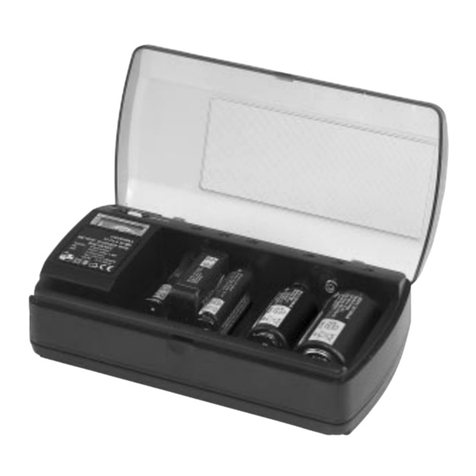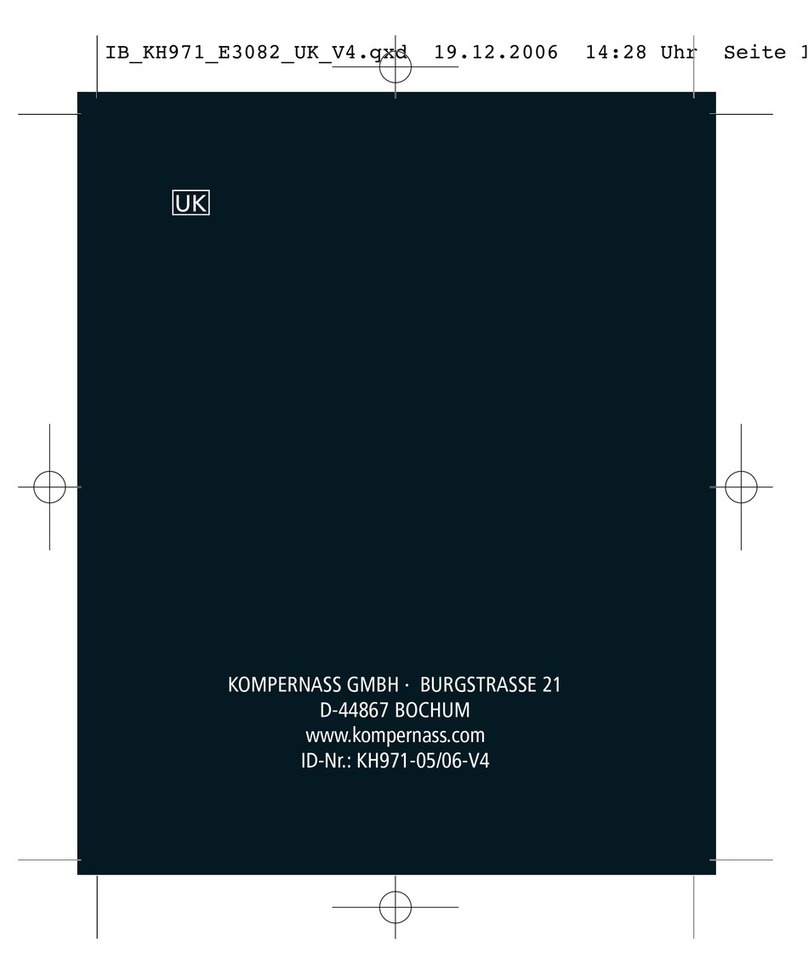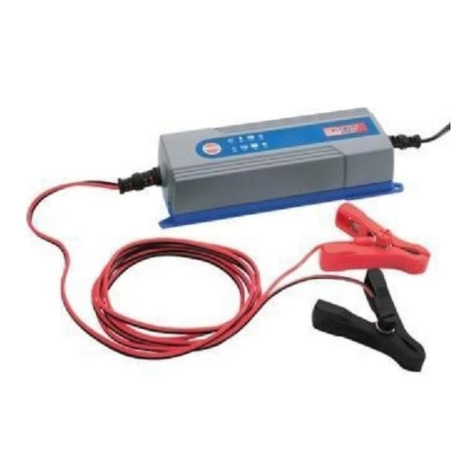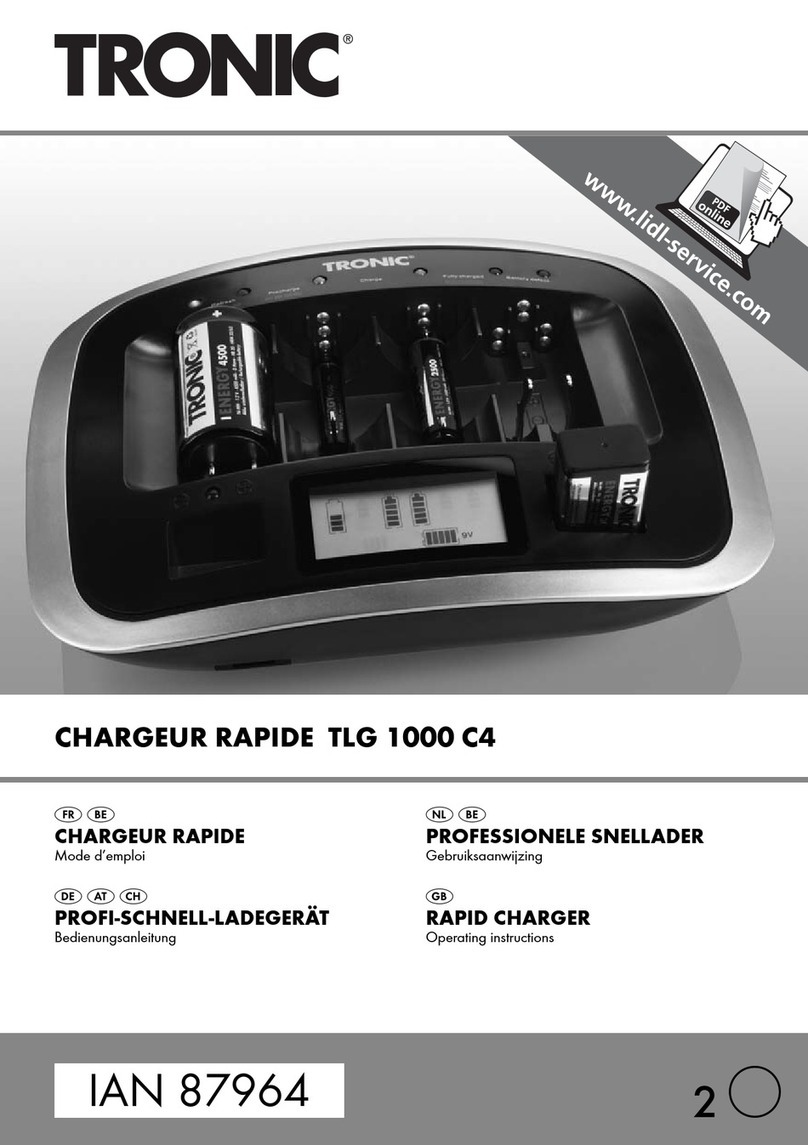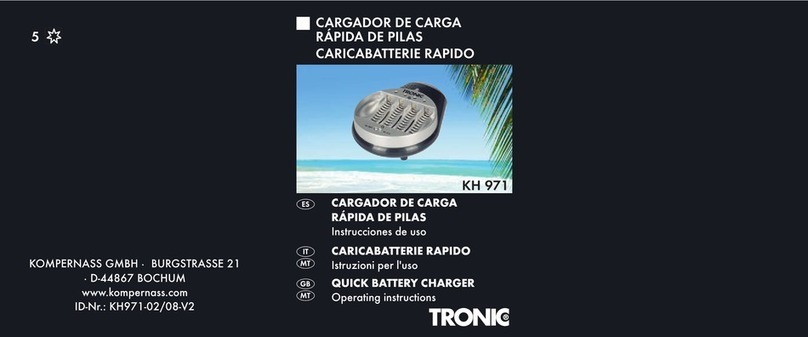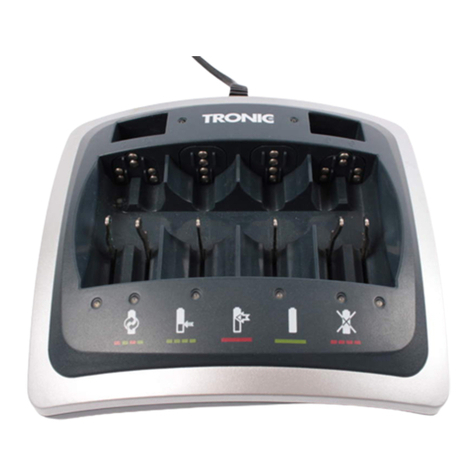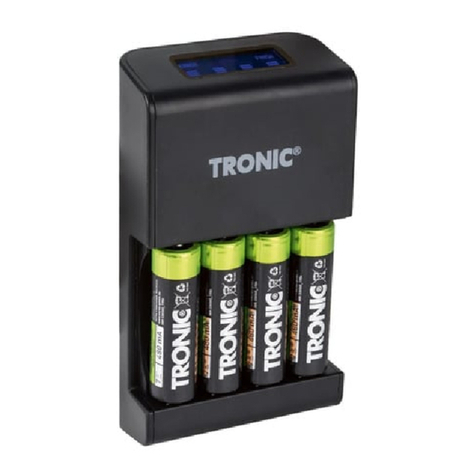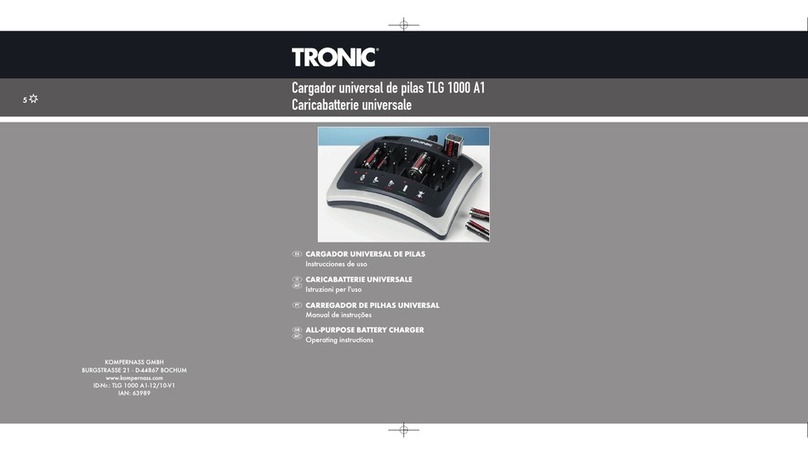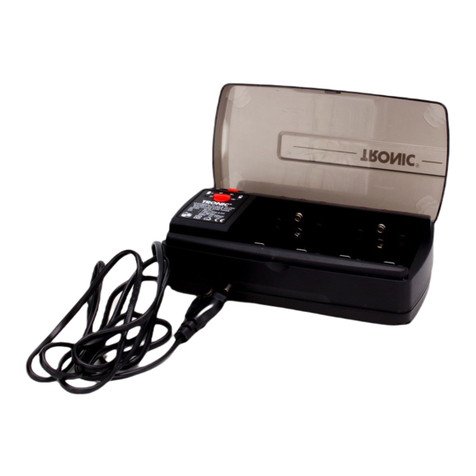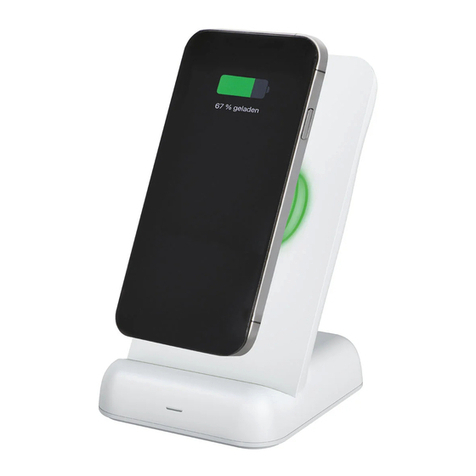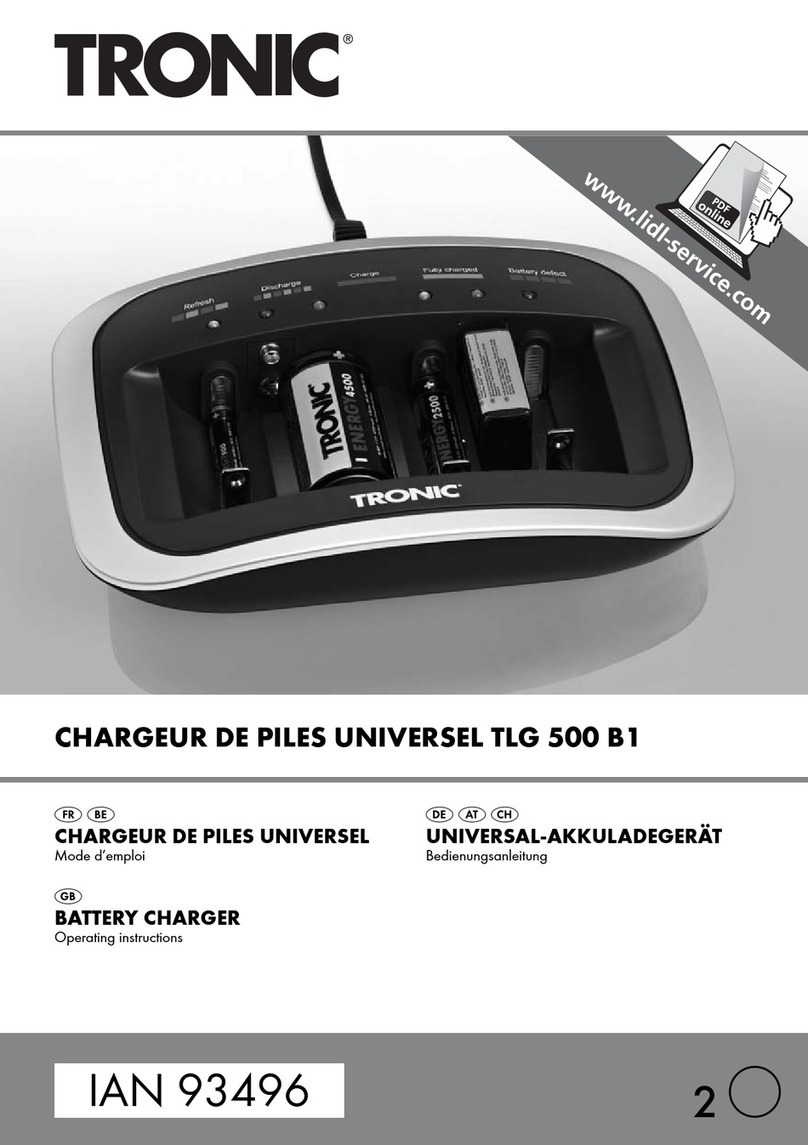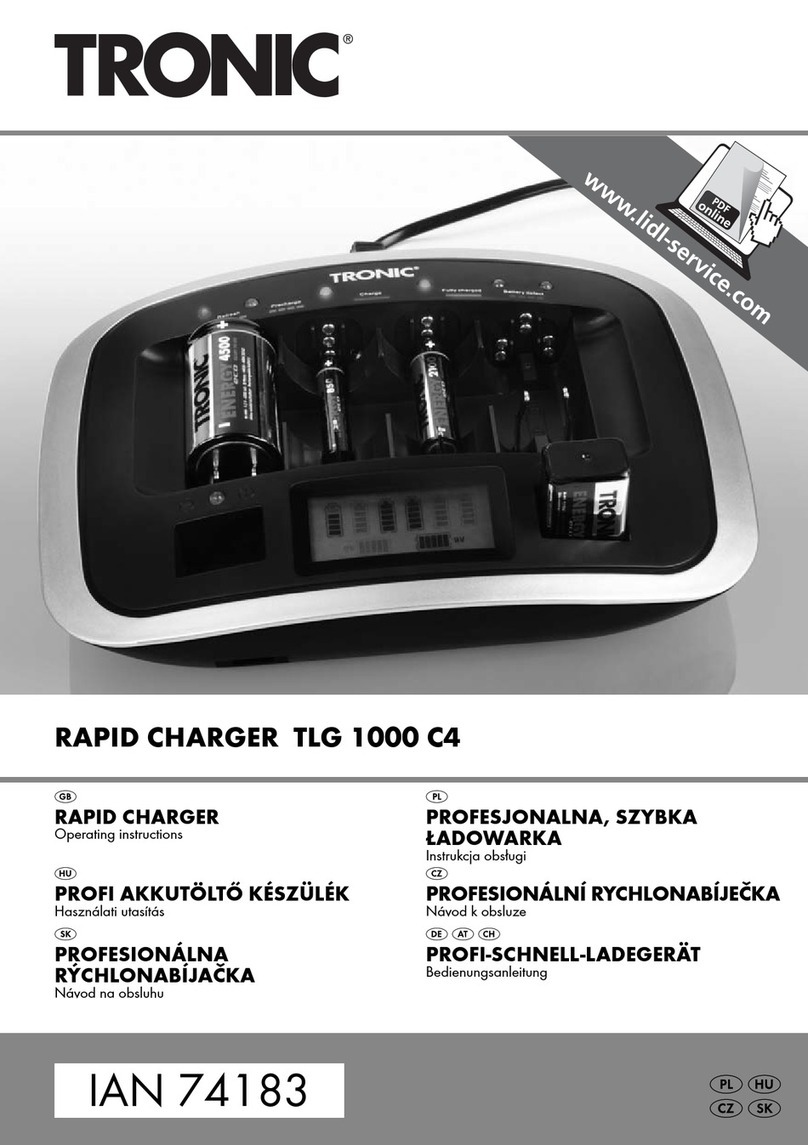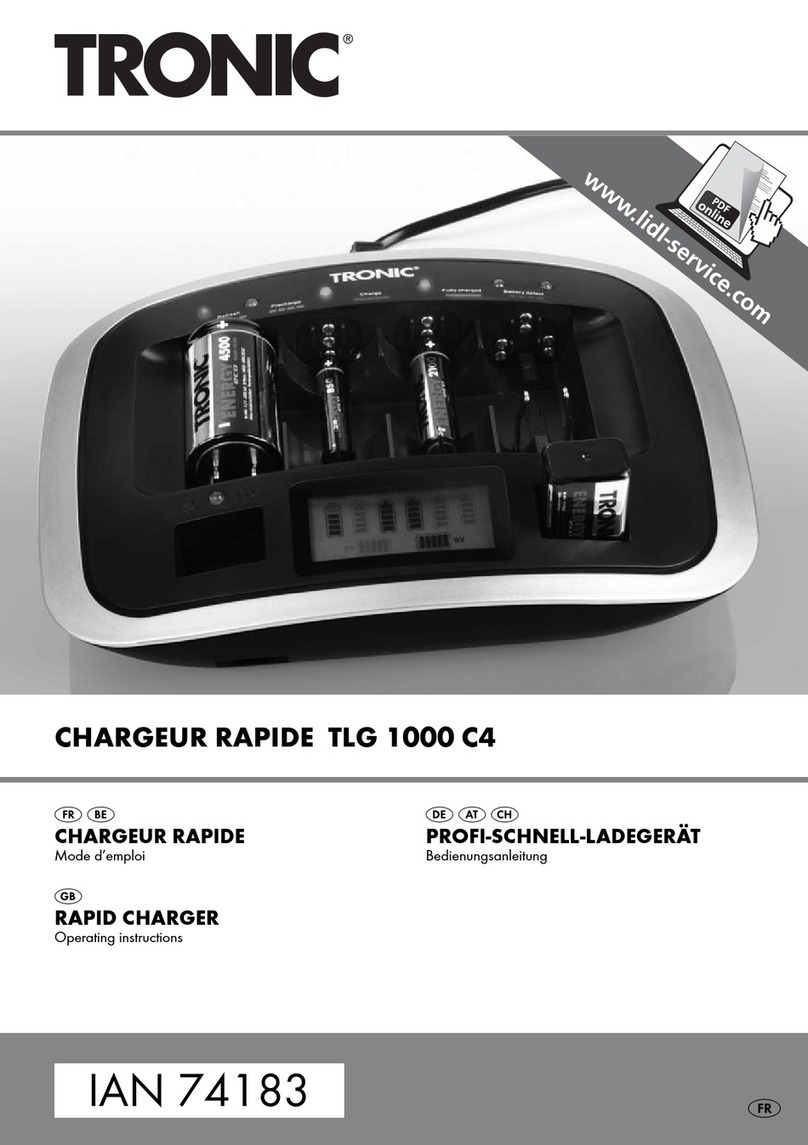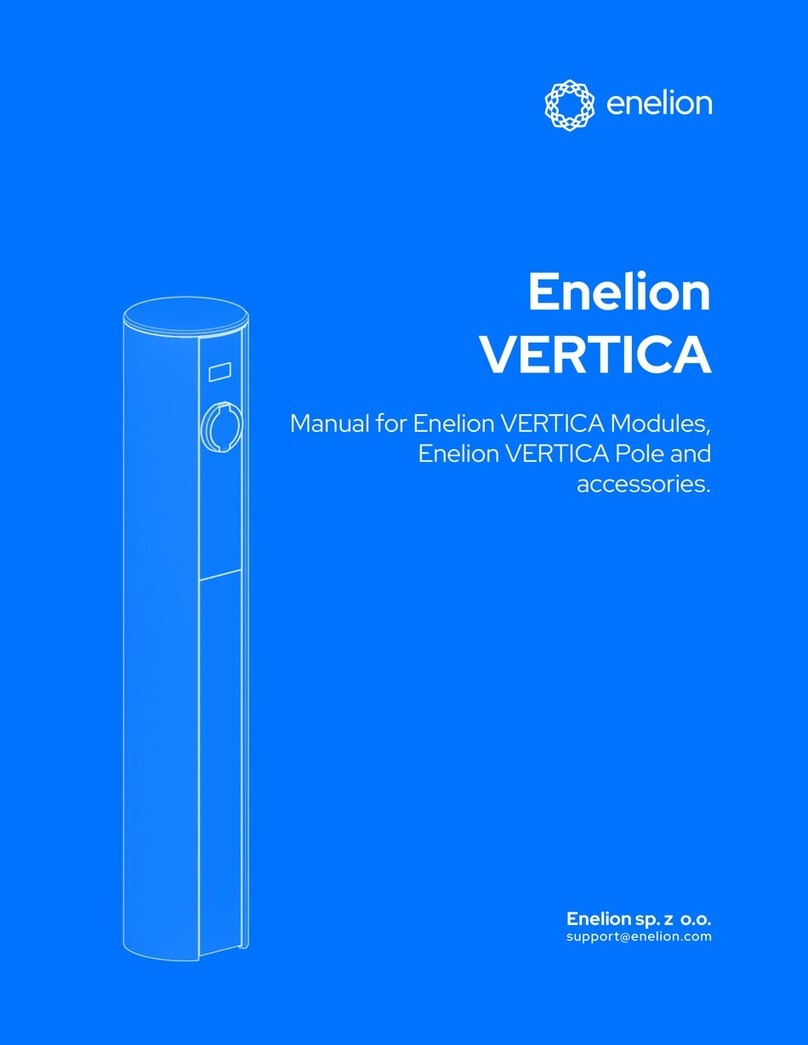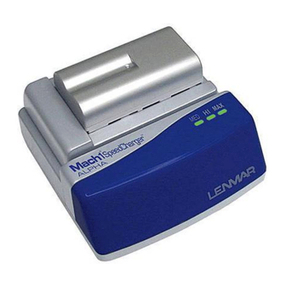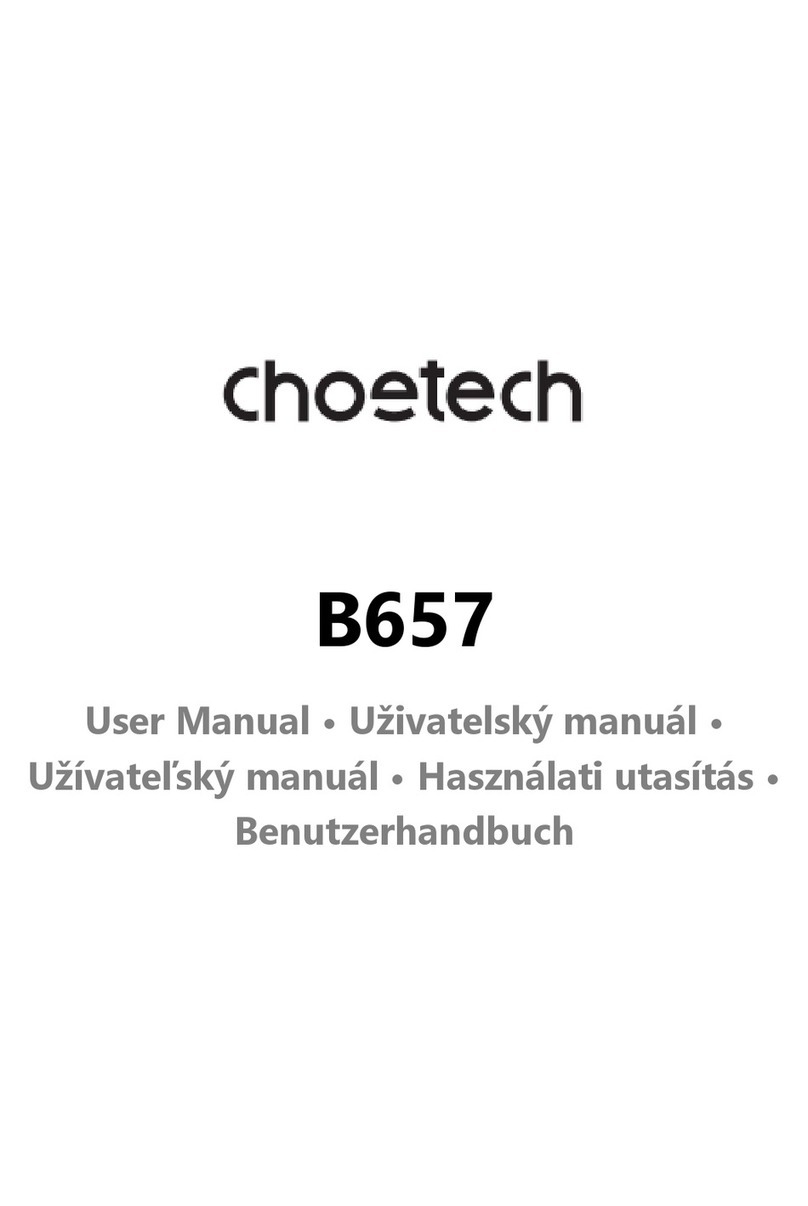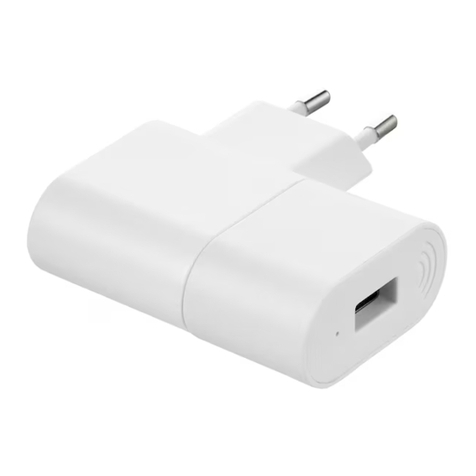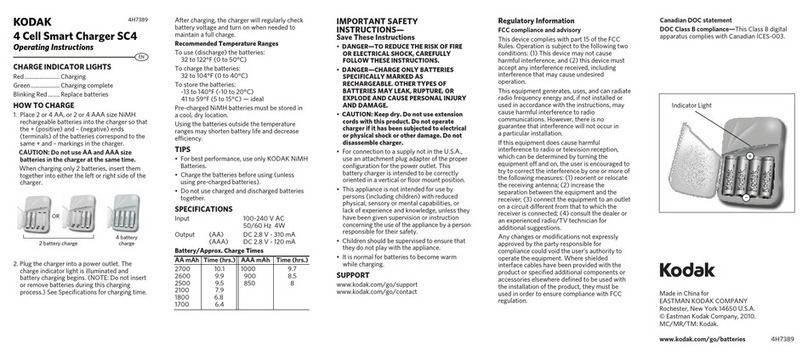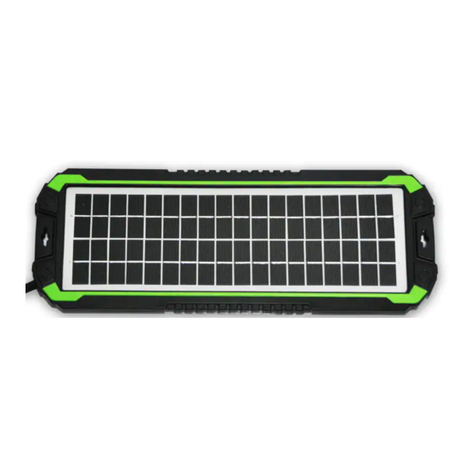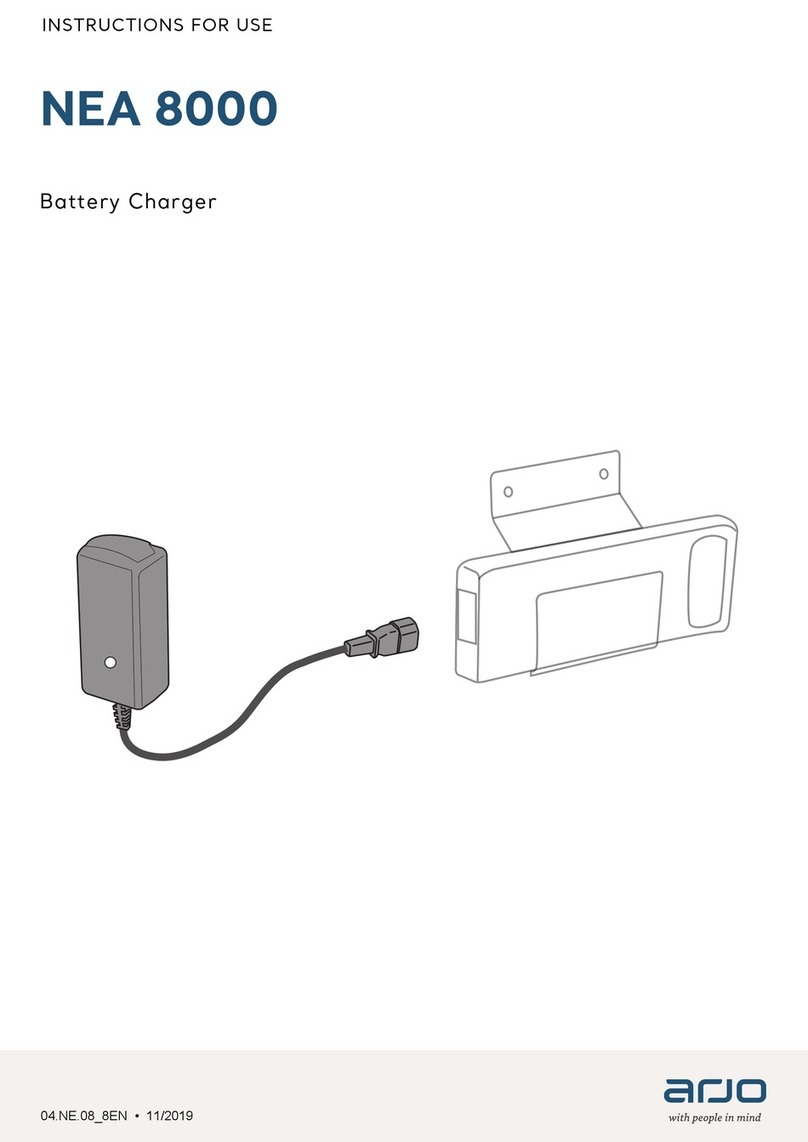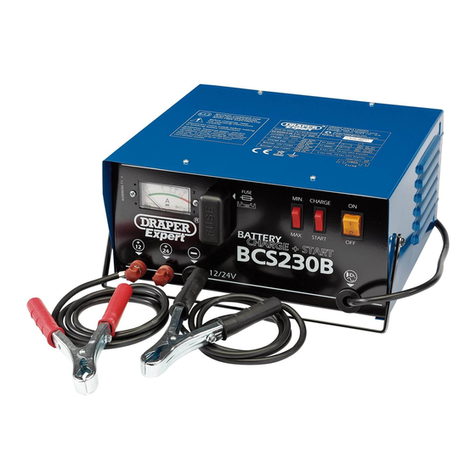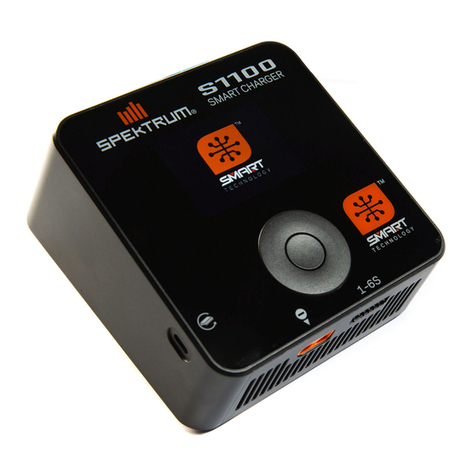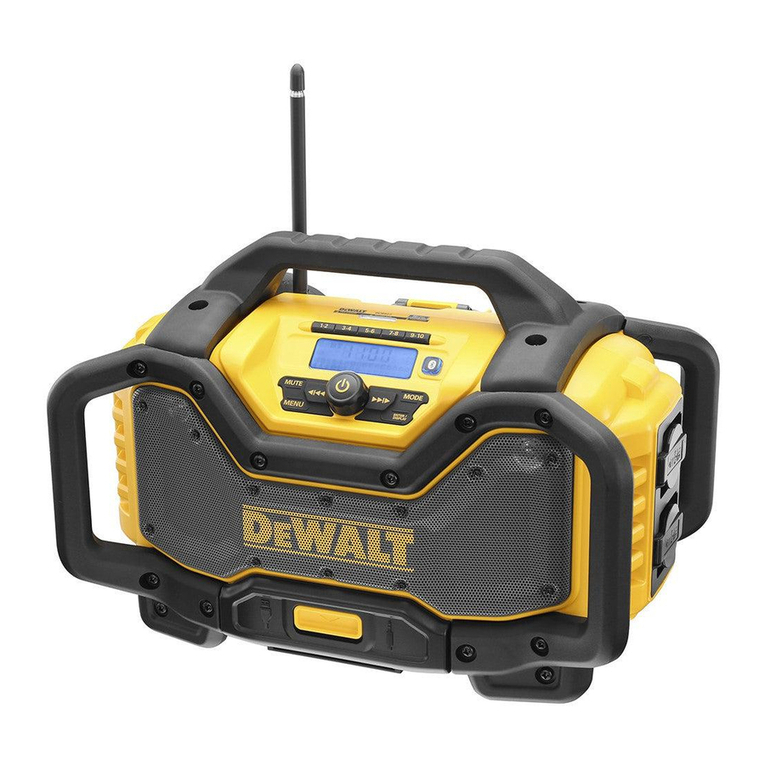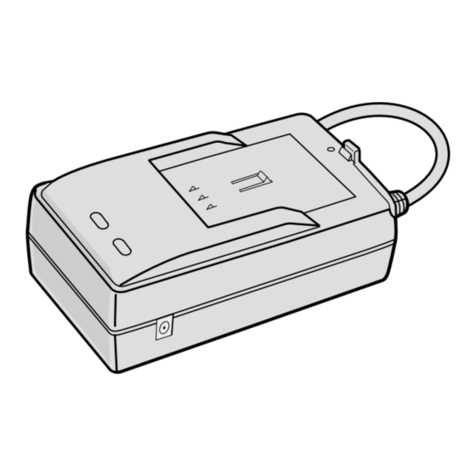Safety
JProtect yourself from an elec-
tric shock! When connecting the
charging station, use a screwdriver
and a spanner with an insulated handle!
JOnly use the charging station for charging and
discharging undamaged 12V lead batteries
(with electrolyte solution or gel)!
JDo not use the charging station for charging or
trickle-charging batteries without recharging
properties.
JDo not use the charging station for charging or
trickle-charging a damaged or frozen battery!
JIn case of permanently installed batteries, make
sure that the vehicle is not in use and is in a se-
cure, stationary position! Switch off the ignition
and select a parking position, apply the parking
brake (e.g. cars)or a retaining rope (e.g. boats)!
JWhen connecting the charging station to the
battery, avoid short-circuiting. Connect the minus
pole connecting cable only to the minus pole
of the battery or to the car body. Connect the
plus pole connecting cable only to the plus pole
of the battery!
JBefore connecting to the mains, make sure that
the mains current is equipped with standard
230 V
~50 Hz, PEN conductor, a 16 A fuse
and a residual-current circuit-breaker!
JOnly touch the power cord j in the insulated
area at the power plug upon contact with the
socket outlet with earthing contact!
JOnly touch the pole connecting cables („–“
und „+“) in the insulated area!
JOnly connect to the battery and the socket out-
let with earthing contact of the mains if it is fully
protected against moisture!
JOnly carry out the assembly, maintenance and
servicing of the charging station when it is dis-
connected from the power supply!
JDo not position the charging station near a fire
or subject it to heat or to long-term temperatures
exceeding 50° C! The output capacity of your
charging station is automatically reduces at
high temperatures.
JDo not damage any leads or connections for
fuel, electricity, brake systems, hydraulics, water
or tele-communications when attaching the
charging station with bolts! Otherwise there
will be a danger to life and limbs!
JMake sure that the plus pole connecting cable
has no contact with the fuel line (e.g. petrol line)!
JEnsure that the mains power socket is at all times
freely accessible so that in a case of emergency
the appliance can be quickly separated from
the power source.
JAttention! Avoid damage caused by improper
use!
JOnly use the charging station with the original
parts provided!
JDo not cover the charging station with objects!
JPlace the battery in a well-ventilated location
during charging.
JProtect the electrical contacts of the battery
against short-circuiting!
JOnly connect the charging station to a socket
outlet with earthing contact equipped with a re-
sidual-current circuit-breaker when using outdoors.
JDo not place the charging station driectly on or
next to the battery!
JAfter completing the charging and floating charge
operation on a battery permanently installed in
the vehicle, first disconnect the cable of the
negative (minus) pole (black) of the charger
from the negative (minus) pole of the battery.
JIn case of malfunction or damage, immediately
disconnect the charging station from the mains!
JHave the charging station repaired by authorised
and trained specialists only! Please contact the
service department for your country!
JBefore connecting the charging station, read
the information on battery maintenance in the
operating instructions of the battery!
JBefore connecting the charging station to a
battery permanently installed in a vehicle, read
the information on electrical safety and mainte-
nance in the operating instuctions of the vehicle!
JDo not subject the battery to mechanical
loads!
JWhen the charging station is not in use, discon-
nect it from the power supply!












